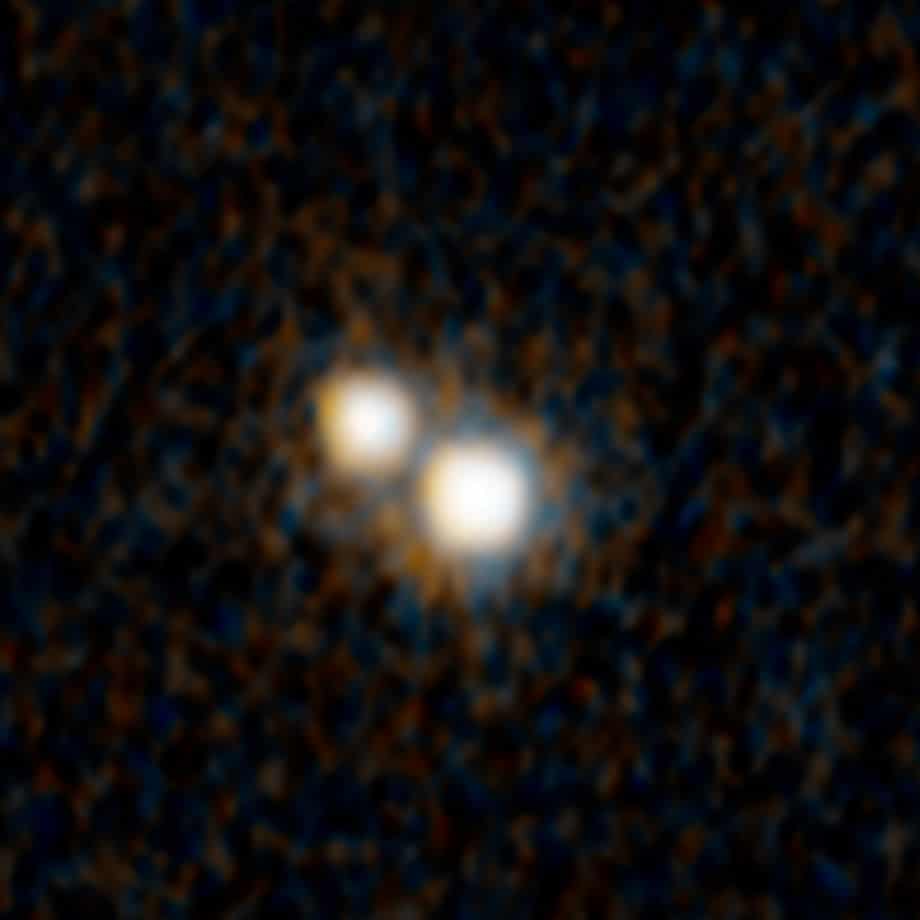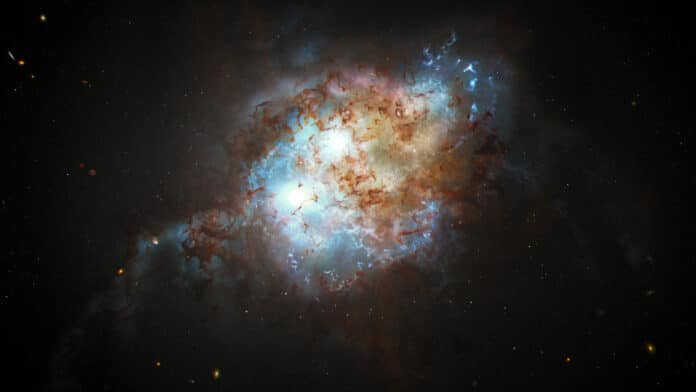Galaxy mergers produce pairs of supermassive black holes (SMBHs), which may be witnessed as double quasars if both SMBHs are rapidly accreting.
Using NASA’s Hubble Space Telescope and other space and ground-based observatories, astronomers investigating these developments have made an unexpected and rare discovery: a pair of gravitationally bound quasars blazing away inside two merging galaxies. This discovery is so exciting because the quasars existed when the Universe was just 3 billion years old.
Graduate student Yu-Ching Chen of the University of Illinois at Urbana-Champaign, lead author of this study, said, “We don’t see a lot of double quasars at this early time in the universe.”
Xin Liu of the University of Illinois at Urbana-Champaign said, “We’re starting to unveil this tip of the iceberg of the early binary quasar population. This is the uniqueness of this study. It is telling us that this population exists, and now we have a method to identify double quasars that are separated by less than the size of a single galaxy.”
Hubble’s sensitivity and resolution produced images that let us obliterate alternative hypotheses. Hubble conclusively establishes that these are, in fact, two supermassive black holes, not two pictures of the same quasar produced by a foreground gravitational lens. In addition, Hubble displays a tidal phenomenon created by the merger of two galaxies, where gravity bends the galaxies’ shapes and creates two tails of stars.

Hubble’s great resolution, however, is insufficient on its own to search for these two light beacons. Gaia, which debuted in 2013, was used by the researchers to identify prospective double-quasar candidates. The quasars appear as single objects in the Gaia data because they are so close together. However, Gaia can pick up a subtle, unexpected “jiggle” that mimics an apparent change in the position of some of the quasars it observes.
The quasars aren’t traveling across space in any discernible way. While each quasar in the duo swings in brightness across periods of days to months as a result of their black hole‘s feeding cycle, their jitter may instead be a sign of random variations in light. The brightness changes between the two quasars can be compared to a distant railway crossing signal. The sign appears to be “jiggling” as the lights alternately flash on either side of the stationary signal.
Because of gravity, the foreground galaxy could split the image of a distant quasar into two, creating the illusion it was a binary pair. Astronomers hence used the Khe Keck telescope to ensure there’s no lensing galaxy in between us and the suspected double quasar.
This double quasar no longer exists as Hubble looks into the distant past. These host galaxies have most likely coalesced into a massive elliptical galaxy over the last 10 billion years, similar to those found in our neighborhood. Moreover, the quasars have combined to form a gigantic supermassive black hole at their core.
The massive black hole in the nearby large elliptical galaxy M87 is 6.5 billion times as massive as the Sun. Maybe throughout the course of the last billions of years, a galaxy or several galaxy mergers gave rise to this black hole.
Journal Reference:
- Chen, YC., Liu, X., Foord, A. et al. A close quasar pair in a disk–disk galaxy merger at z = 2.17. Nature 616, 45–49 (2023). DOI: 10.1038/s41586-023-05766-6
